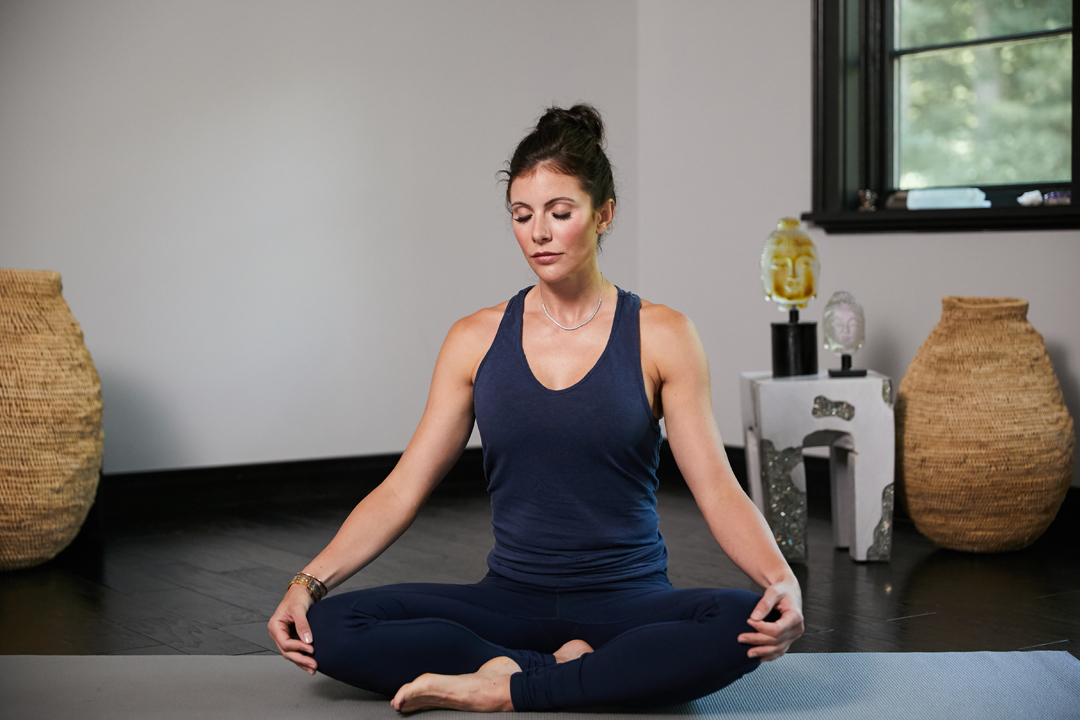
Yoga practice has such naturally calming effects it is perfect for postpartum. Becoming a mother is a stressful time and you are generally working on very little sleep. Even when cleared for exercise, your body has been through such miraculous changes over the last 9 months, traditional more high impact workouts can be detrimental for recovery. Scientifically we know yoga can alleviate pain, reduce stress, and even help you get deeper sleep which is why it was my go to form of exercise after having both of my daughters.
In the words of Jessica Gershman, popularly known as thezenmommy and a mom of 4 “I discovered yoga shortly after the birth of my first daughter and I will never forget that first moment lying in savasana and feeling so perfectly comfortable in my body for the very first time in my life. “
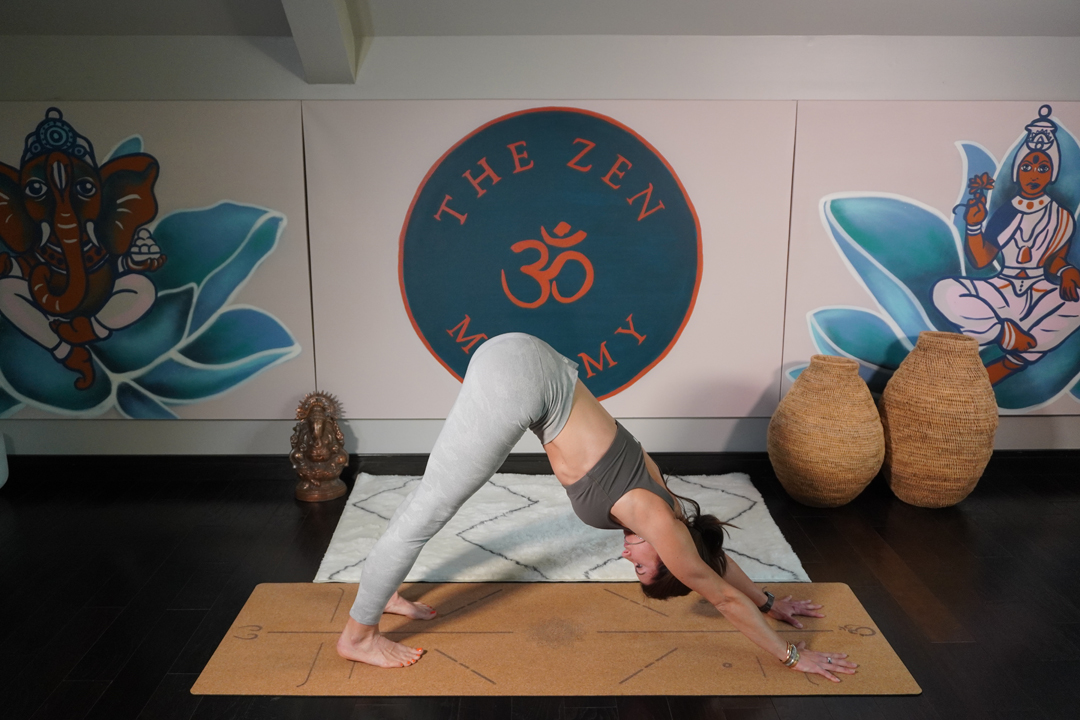
Changes every woman’s Body Undergoes after childbirth
A woman’s body goes through so many changes during and after childbirth and so many women like myself don’t like the new post-partum body. Yoga helped me reconnect with my inner beauty. For Jessica “My yoga mat was a safe place, where I was able to explore how I was feeling, connect with my emotions, observe my thoughts, and witnesses my reactions’. After having that life changing moment on the mat, I continued to practice yoga frequently. The more I practiced, the better I felt. I can recall the countless times I would be in a disagreement with my husband on my way to the yoga studio (about issues I can’t recall) and 10 times out of 10, I would call on my way home and apologize and see things in a whole new light. Yoga was giving me the space to explore a new perspective. My practice continued to grow and blossom to the point where I was practicing every day. I noticed my body became stronger, leaner, and more flexible. More importantly I noticed I became a more patient person. A quality that is as important as a parent because kids will test your patience at every opportunity.
After the birth of my second daughter, my yoga mat was one of the few times I was able to take just for me. The busier I got, my yoga practice evolved with me. What was once a 7 day a week hourly practice became 10-15 minutes a few times a week. I gravitated from a vigorous intense yoga flow to a gentle more restorative practice. Yoga changed along with me.
As my kids got older, I leaned into my meditation practice and created the space I need to do my inner child work. A woman’s body is forever changing, so are our life circumstances. When you are a mother of little children, your time is very physically demanding. Your children need constant supervision and support. Yoga at this time in life may look like breath work, legs up the wall pose, and shavasana. As your children are older they demand less of your physical time and more of your emotional intelligence. Yoga may look like Sun Salutations to move stuck energy, warrior poses to ignite your inner goddess and meditation. Yoga can move and grow with you.
It has always been a source of comfort and support for me and will continue to change as I age and the demands of my life ebb and flow.
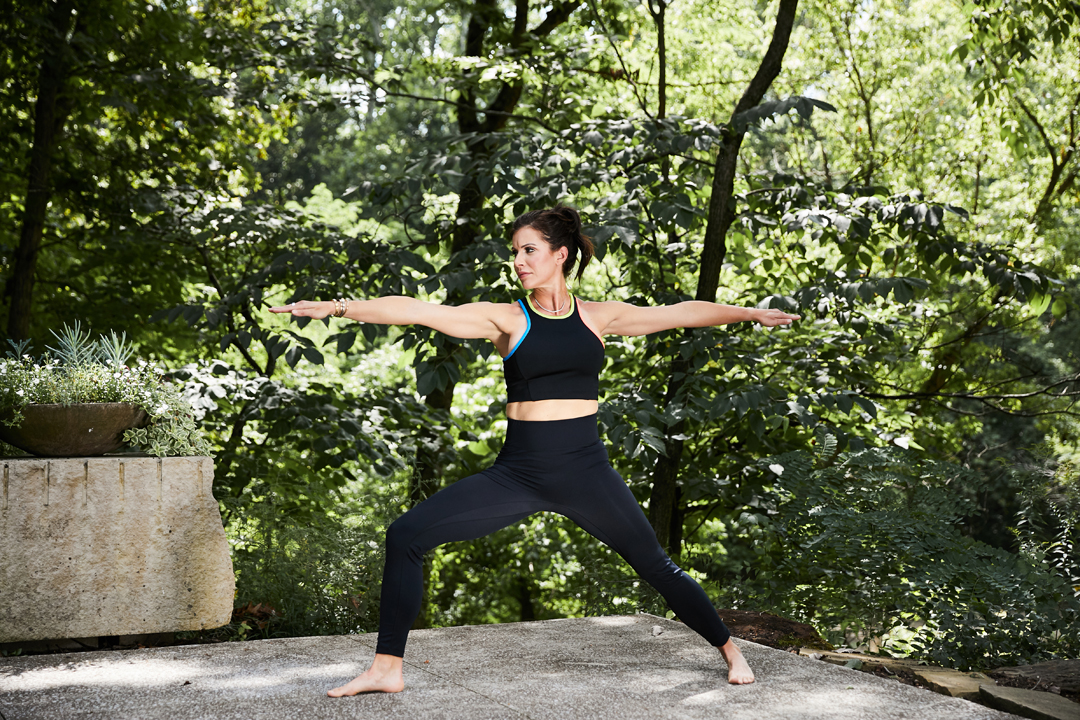
Yoga poses for postpartum Routine:
For Postpartum and up to 3 months
For postpartum 3 months and beyond: can start to incorporate mild inversions such as down dog and strengthening poses such as warrior II.
Supported Breath Work:
I love practicing the 7-11 breath for maximum stress relief. Becoming a new mom is stressful and we need tools in our toolbox to down regulate our nervous system and ease our stress.
Adds in Jessica
- Begin by sitting in a comfortable position. Rest your hands in your lap.”
- Focus on breathing in through your nose for a count of 7, exhale evenly for 11 counts. Repeat 10 times and notice how you are feeling. Repeat as many times as necessary.
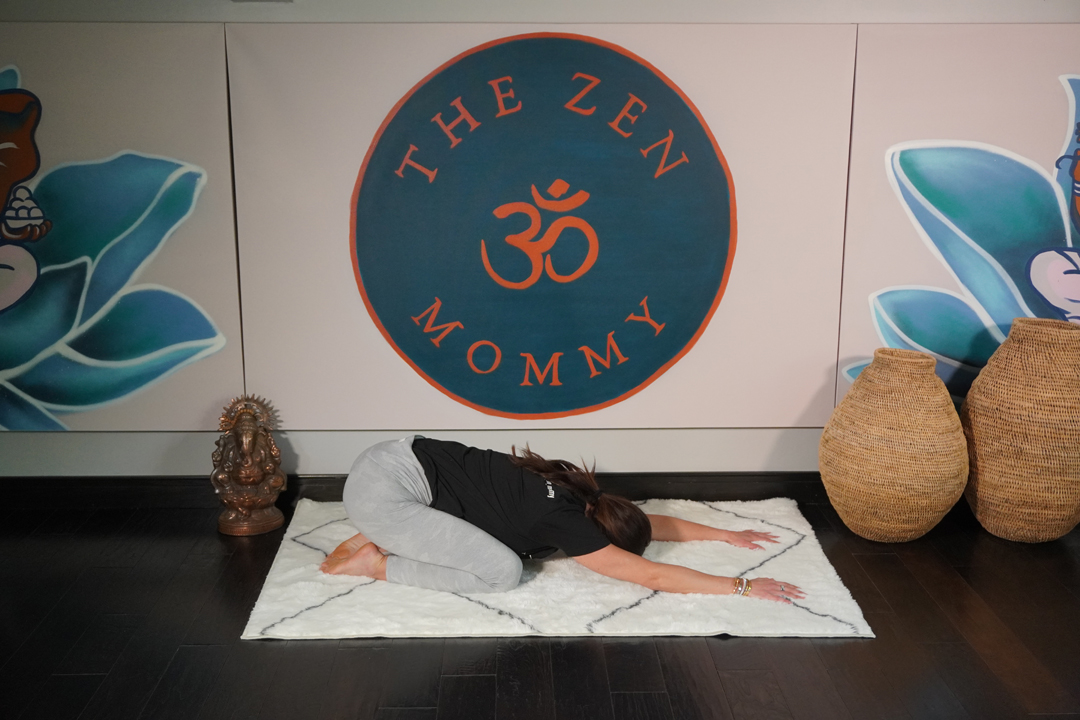
Child’s pose (Balasana):
Benefits: relieves tension in back shoulders and chest. This asana stretches the hips, thighs, and ankles.
How to practice:
- Kneel down on your mat, knees at hip distance.
- Bring the toes together; sit down on your heels. When you are ready, lower the torso forward towards the mat in between the thighs. Extend the arms out in front with the palms facing down. If the body doesn’t permit it, spread your knees out further to avoid putting pressure on your abdomen.
- All the head to relax down on your mat or on a block. Relax the neck, arms, and shoulders. Relax the muscles and reconnect with your breath. (Variations) if you hip joints are tight keep your knees together and lower your torso on top of your thighs.
- Place a rolled towel below your shins to take the pressure off your ankles. Use caution when practicing child’s pose if you’ve suffered a knee injury.
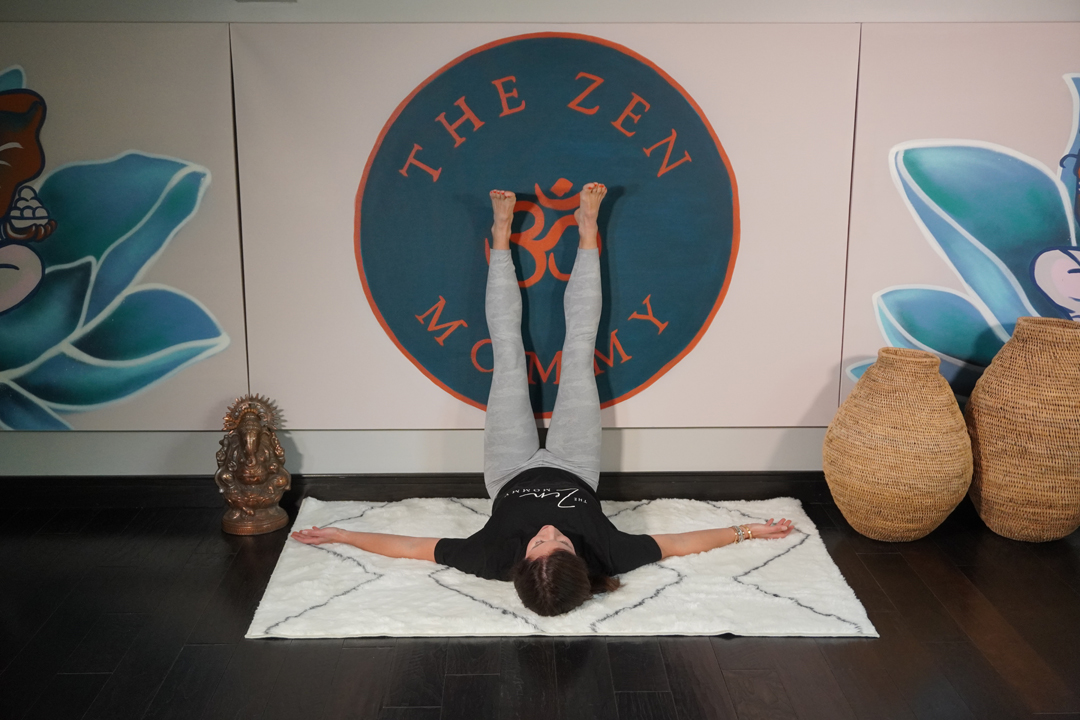
Down Dog (Adho Mukha Shvanasana)
Benefits: as a mild inversion, down dog works to relieve the tensions on the spine and bring more blood flow to your brain, also great to strengthen the arms and stretch the back of the legs.
How to practice:
- Start in plank with your feet hip distance apart, your toes tucked, and your shoulders over your wrists.
- Lift your hips to form a straight line from your shoulders to your heels. Lift your hips back and up to form a pyramid shape with your body.
- Focus on creating a straight line from your hands to your hips. Squeeze your upper thighs and abdominal muscles toward each other.
- Rotate your triceps downward to open your chest and collarbones. Relax your neck looking back toward your feet and release your heels toward the floor. Hold the posture for 10 breaths breathing evenly.
Warrior II (Virabhadrasana II)
Benefits: opens your chest and lungs, energizes tired limbs, develops balance and stability, and stretches the hips and shoulders.
How to practice:
- From Downward facing dog, step your right foot forward to the top of your mat, ground your left heel and come up to standing side facing (the long side of your mat),
- Turn your left foot in slightly, and your right foot directly out to the side toward the top of your mat. Make sure your front heel is in line with your back arch.
- Engage your leg muscles to the bone and draw the muscles in your pelvic floor in and up. Keeping your legs engaged; bend your right knee to 90 degrees. Keep your torso vertical and your arms extending outward at shoulder height.
- Hold the posture for 10 breaths focusing on breathing evenly. Use down Dog as a transition pose and repeat on the other side.
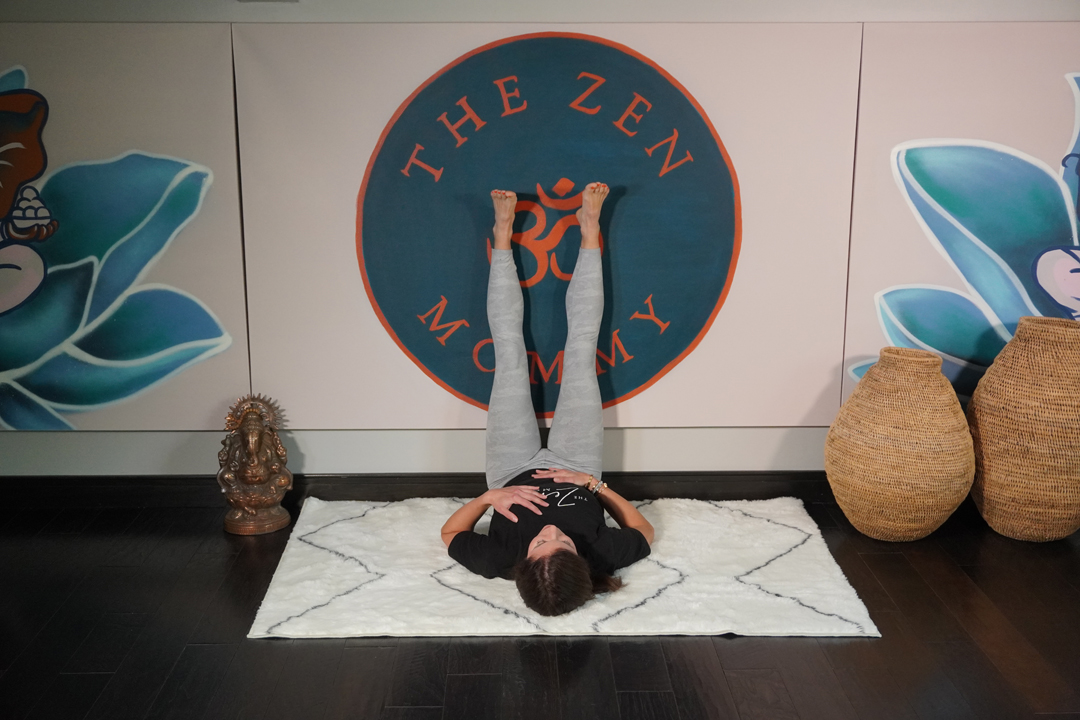
Legs up the wall pose (viparita karani):
Benefits: improve circulation, stress, and relief, reduce any lower leg swelling.
How to practice:
- Practice by setting your bottom as close to a sturdy wall as possible.
- Extend your legs so that you heels are on the wall and your legs are above your heart.
- Support your upper body with pillows and blankets for maximum comfort.
- Hold for 3-5 minutes and focus on calming, gentle, natural breath
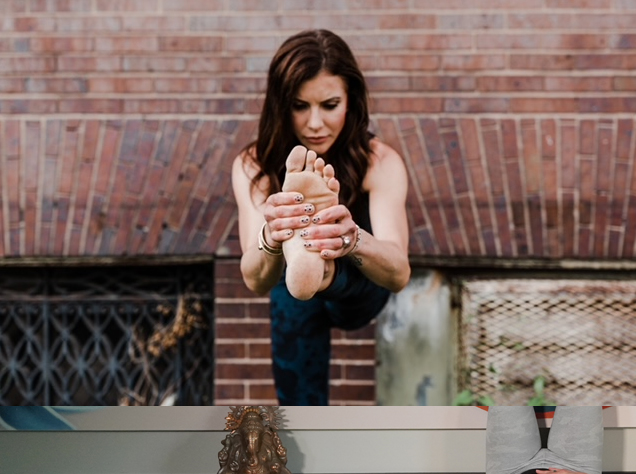
About the author:
Jessica Gershman is the voice behind The Zen -ish Mommy podcast (formerly Mom Slow Down) as well as a passionate believer in the power of self-care. Through her work as a certified yoga instructor, an accomplished home chef, and a dedicated mindfulness practitioner she creates a place where moms can slow down, be authentic, and take the ‘me’ time without guilt.
Disclaimer
The Content is not intended to be a substitute for professional medical advice, diagnosis, or treatment. Always seek the advice of your physician or other qualified health provider with any questions you may have regarding a medical condition.